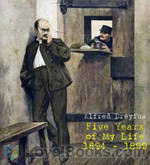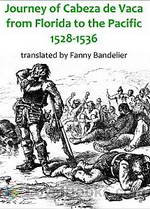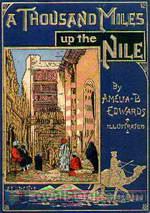|
Books Should Be Free Loyal Books Free Public Domain Audiobooks & eBook Downloads |
|
|
Books Should Be Free Loyal Books Free Public Domain Audiobooks & eBook Downloads |
|
Non-fiction |
|---|
|
Book type:
Sort by:
View by:
|
By: Alfred Ayres (1826-1902) | |
|---|---|
 The Verbalist
The Verbalist
Ayres arranges usage problems alphabetically and treats certain areas in greater detail as he sees fit. For example, his first entry is A-AN (articles). His second is ABILITY-CAPACITY, in which he distinguishes between the meanings. The alphabetical arrangement continues through to YOURS. (Introduction by Bill Boerst) | |
By: Alfred Binet (1857-1911) | |
|---|---|
 The Mind and the Brain
The Mind and the Brain
Today, almost every layperson understands the concept of intelligence tests and can glibly discuss IQ scores. In fact, these have become so common in the popular imagination that magazines, websites and pop quizzes offer to assess your intelligence at the drop of a hat! In this scenario, it's interesting to recall the very first person who proposed the concept of measurable intelligence. Alfred Binet was basically a clinical psychologist whose wide-ranging interests in learning difficulties faced by school children prompted him to undertake extensive studies in human cognition, psychology, learning and behavior... | |
By: Alfred Comyn Lyall (1835-1911) | |
|---|---|
 Studies in Literature and History
Studies in Literature and History
| |
By: Alfred Dreyfus (1859-1935) | |
|---|---|
 Five Years of My Life 1894-1899
Five Years of My Life 1894-1899
Alfred Dreyfus, a Jewish captain in the French Army was court martialed in 1894 on a trumped up charge of treason and condemned to life imprisonment on Devil’s island, a penal colony off French Guiana. His prison diary, published as Five Years of My Life in 1901 is a heroic tale of survival against daunting odds: isolation, deprivation, torture . . Alfred left behind in Paris his wife Lucie, who, forbidden to join her husband in exile, struggled to protect their two children from the rampant anti-Semitism that swirled about them, while she begged her husband to hold onto life as she tried to clear his name... | |
By: Alfred John Church (1829-1912) | |
|---|---|
 Stories from Virgil
Stories from Virgil
Alfred J. Church created 26 stories from the original Greek version of Virgil's Aeneid. He included well-known ones, such as "The Horse of Wood" and "The Love and Death of Dido," as well as many others perhaps less well-known, such as "King Evander" and "The Funeral Games of Anchises." | |
By: Alfred Marshall (1842-1924) | |
|---|---|
 Principles of Economics
Principles of Economics
“The most valuable of all capital is that invested in human beings.” An uncannily prophetic quote from an 1890 book, Principles of Economics by Alfred Marshall presents an idea that has been accepted by major corporations and governments all over the world today. People's understanding of market behavior and how industries operate has its roots in the work done by European economists more than a century ago. Little has changed in terms of principles, though the effects of globalization and technology resulted an unmistakable impact on how business is done today... | |
By: Alfred North Whitehead (1861-1947) | |
|---|---|
 The Concept of Nature
The Concept of Nature
In The Concept of Nature, Alfred North Whitehead discusses the interrelatedness of time, space, and human perception.The idea of objects as ‘occasions of experience’, arguments against body-mind duality and the search for an all-encompassing ‘philosophy of nature’ are examined, with specific reference to contemporary (Einstein, with whose theory of relativity he has some complaints) and ancient (Plato, Aristotle) approaches. | |
By: Alfred Pink | |
|---|---|
 Gardening for the Million
Gardening for the Million
| |
By: Alfred Russel Wallace (1823-1913) | |
|---|---|
 Is Mars Habitable?
Is Mars Habitable?
In 1907 Wallace wrote the short book Is Mars Habitable? to criticize the claims made by Percival Lowell that there were Martian canals built by intelligent beings. Wallace did months of research, consulted various experts, and produced his own scientific analysis of the Martian climate and atmospheric conditions. Among other things Wallace pointed out that spectroscopic analysis had shown no signs of water vapor in the Martian atmosphere, that Lowell’s analysis of Mars’ climate was seriously flawed and badly overestimated the surface temperature, and that low atmospheric pressure would make liquid water, let alone a planet girding irrigation system, impossible. | |
By: Alice Bacon (1858-1918) | |
|---|---|
 Japanese Girls and Women
Japanese Girls and Women
A clear and delightful peek into the world of Japanese girls and women of the late 1800s: their childhood, education, marriage and intimate family life. And it is done by someone who admires the immense resources, abilities and strength shown by all of these girls and women. The intricate customs that bind the society together and must be learned by every girl, such as the annual Doll ceremony are explained as well as the difficult life of a Japanese wife of this period. Life among the nobles and upper class in the courts and castles, something long hidden away, is explored... | |
By: Alice Bradley | |
|---|---|
 For Luncheon and Supper Guests
For Luncheon and Supper Guests
| |
By: Alice Calhoun Haines (1874-1965) | |
|---|---|
 Luck of the Dudley Grahams
Luck of the Dudley Grahams
The Luck of the Dudley Grahams is the story of the four Graham children and their recently widowed mother, trying to make ends meet by taking boarders into their somewhat eccentric home, as told by 17-year-old Elizabeth to her diary. She chronicles their struggles with the boarders, housekeeping on a very tight budget, and the adventures of her three younger siblings. If the category existed at the time, this would be more of young adult novel than a children's book, as Elizabeth has her moments of angst and worry about herself, her family, and their future. - Summary by Colleen McMahon | |
By: Alice Freeman Palmer (1855-1902) | |
|---|---|
 Why Go to College? an address
Why Go to College? an address
| |
By: Alice Lady Lovat | |
|---|---|
 The Marvels of Divine Grace
The Marvels of Divine Grace
These are Alice Lady Lovat's meditations on the treatise "Del Aprecio y Estima de la Divina Gracia," written by the prolific Roman Catholic theologian and mystic Juan Eusebio Nieremberg, S.J. (1595-1658). Nieremberg's treatise was published in 1638 in Madrid, where he taught Sacred Scripture at the Jesuit Colegio Imperial. Abbot Oswald Hunter-Blair, O.S.B. wrote the preface for Lovat's book, which bears an imprimatur. (Introduction by dave7) | |
By: Alice M. Hayes | |
|---|---|
 The Horsewoman A Practical Guide to Side-Saddle Riding, 2nd. Ed.
The Horsewoman A Practical Guide to Side-Saddle Riding, 2nd. Ed.
| |
By: Alice Morse Earle (1851-1911) | |
|---|---|
 Home Life in Colonial Days
Home Life in Colonial Days
CHAPTER I HOMES OF THE COLONISTS When the first settlers landed on American shores, the difficulties in finding or making shelter must have seemed ironical as well as almost unbearable. The colonists found a land magnificent with forest trees of every size and variety, but they had no sawmills, and few saws to cut boards; there was plenty of clay and ample limestone on every side, yet they could have no brick and no mortar; grand boulders of granite and rock were everywhere, yet there was not a single facility for cutting, drawing, or using stone... | |
By: Allan F. (Allan Ferguson) Westcott (1882-) | |
|---|---|
 A History of Sea Power
A History of Sea Power
| |
By: Allan Fea (1860-1956) | |
|---|---|
 Secret Chambers and Hiding Places
Secret Chambers and Hiding Places
“Secret Chambers and Hiding Places” is a collection of concealments and their uses, almost all within England, although a very few passages and chambers in continental Europe are mentioned, Jacobite hidey holes in Scotland, while the final chapter of the book covers Bonnie Prince Charlie’s wanderings around Scotland, among caves and other hiding places. Most chapters are devoted to historical events; such as the the seventeenth century persecution of roman catholics (with many large houses having specially constructed “priests’ holes”), or various unpopular monarchs and their hiding places... | |
By: Allen H. Godbey (1864-1948) | |
|---|---|
 Great Disasters and Horrors in the World's History
Great Disasters and Horrors in the World's History
"Mankind is constantly astonished by reports of mishaps and disasters of manifold character, when there is seldom room for astonishment. A large proportion of the calamities reported from day to day are directly due to the haste, greed, and heedlessness of man himself, and need no comment. But there is a large class of disasters, due solely to meteorological or geological conditions, which surpass all others in magnitude and appalling destruction. In such cases men insist on prating about “mysterious visitations,” as though these occurrences were subject to the dominion of no law. To an examination of such is this book devoted." From the preface. | |
By: Alva Agee (1858-1943) | |
|---|---|
 Right Use of Lime in Soil Improvement
Right Use of Lime in Soil Improvement
| |
By: Alvar Núñez Cabeza de Vaca (ca. 1490/1507 - ca.1557/1579) | |
|---|---|
 The Journey of Alvar Núñez Cabeza de Vaca
The Journey of Alvar Núñez Cabeza de Vaca
Few stories of shipwreck and survival can equal that of the 16th century Spaniard Alvar Núñez Cabeza de Vaca who, cast ashore near present day (USA) Tampa Bay, Florida, in 1528, survived eight years of hand-to-mouth existence among the Indians of the South and Southwest, and who walked on foot across the plains to the Pacific Coast, arriving in Mexico in 1536. In 1542 he published an account of his adventures, and the present reading is based on Fanny Bandelier’s English translation of that text... | |
By: Ambrose Bierce (1842-1914?) | |
|---|---|
 The Devil's Dictionary
The Devil's Dictionary
RESPECTABILITY, n. The offspring of a liaison between a bald head and a bank account. BEAUTY, n. The power by which a woman charms a lover and terrifies a husband. LITIGANT, n. A person about to give up his skin for the hope of retaining his bones. If these caustic definitions catch your fancy, you'd enjoy The Devil's Dictionary by Ambrose Bierce. He was a columnist with the San Francisco News Letter, a weekly paper which was a business publication aimed at the corporate sector. However, it had a column entitled Town Crier which featured satirical asides and comments in a lighter vein... | |
 Write it Right
Write it Right
Witty, opinionated alphabetical examples of what Bierce considered poor (American) English and advice on alternatives – entertaining, thought-provoking, occasionally outdated but so interesting to see how style and taste have changed. | |
|
At the outset of the American Civil War, [the writer Ambrose] Bierce enlisted in the Union Army's 9th Indiana Infantry Regiment....In February 1862 he was commissioned First Lieutenant, and served on the staff of General William Babcock Hazen as a topographical engineer, making maps of likely battlefields. Bierce fought at the Battle of Shiloh (April 1862), a terrifying experience that became a source for several later short stories and the memoir, "What I Saw of Shiloh". In June 1864, he sustained a serious head wound at the Battle of Kennesaw Mountain, and spent the rest of the summer on furlough, returning to active duty in September. He was discharged from the army in January 1865. | |
By: Amelia B. Edwards (1831-1892) | |
|---|---|
 A Thousand Miles up the Nile
A Thousand Miles up the Nile
Known as the Godmother of Egyptology, Amelia Ann Blanford Edwards traveled through Egypt at a time when archeology was in its infancy in that country and literally anyone with a spade or trowel could go exploring through the magnificent, untouched ruins. She was one of a group of amazing Victorian women who ignored the repressive 19th century attitudes toward female scientists and defied society to follow their passion for history. A Thousand Miles up the Nile was first published in 1877. The title refers to the approximate distance from Alexandria to the Second Cataract of the Nile river, a journey that the author undertook over the course of a year in Egypt... | |
 Untrodden Peaks and Unfrequented Valleys
Untrodden Peaks and Unfrequented Valleys
Amelia B. Edwards wrote this historical travelogue in in 1873. The book describes her travels through a relatively un-visited area in the South Tyrol district of Italy. The Dolomites are a part of that most famous of mountain chains, the Alps.In this book, the Writer and her friend and companion, L., travel from Southern Italy, having over-wintered there, to visit the Dolomite district. Her chatty style, dry sense of humor, accuracy of facts, and sympathy for humanity set her works apart. The slice of Victorian British life presented is quite captivating... | |
By: Amelia Simmons (c. 1700s-1800s) | |
|---|---|
 American Cookery
American Cookery
American Cookery, by Amelia Simmons, was the first known cookbook written by an American, published in 1796. Until this time, the cookbooks printed and used in what became the United States were British cookbooks, so the importance of this book is obvious to American culinary history, and more generally, to the history of America. The full title of this book was: American Cookery, or the art of dressing viands, fish, poultry, and vegetables, and the best modes of making pastes, puffs, pies, tarts, puddings, custards, and preserves, and all kinds of cakes, from the imperial plum to plain cake: Adapted to this country, and all grades of life. (Description from Wikipedia) | |
By: Amy Levy (1861-1889) | |
|---|---|
 Romance of a Shop
Romance of a Shop
Praised by Oscar Wilde amongst other contemporaries, Amy Levy's first novel tells the story of the four Lorimer sisters, who decide to open their own photography business after the death of their father which has left them in poverty. The novel examines the opportunities and difficulties of urban life for the "New Woman" in the late nineteenth century. Not only was Levy unusual as a female novelist in this period, but she was also from an Anglo Jewish family. - Summary by Jane Gough | |
By: Amy Steedman | |
|---|---|
 In God's Garden
In God's Garden
“In this book you will not find the stories of all God’s saints. I have gathered a few together, just as one gathers a little posy from a garden full of roses. But the stories I have chosen to tell are those that I hope children will love best to hear.” (excerpt from In God’s Garden by Amy Steedman) | |
By: Andrew Carnegie (1835-1919) | |
|---|---|
 James Watt
James Watt
This biography of the inventor James Watt covers his early years, successes and failures, and legacy. | |
 Autobiography of Andrew Carnegie
Autobiography of Andrew Carnegie
This autobiography of Andrew Carnegie is a very well written and interesting history of one of the most wealthy men in the United states. He was born in Scotland in 1835 and emigrated to America in 1848. Among his many accomplishments and philanthropic works, he was an author, having written, besides this autobiography, Triumphant Democracy (1886; rev. ed. 1893), The Gospel of Wealth, a collection of essays (1900), The Empire of Business (1902), and Problems of To-day (1908)]. Although this autobiography was written in 1919, it was published posthumously in 1920. | |
By: Andrew Jackson | |
|---|---|
 Robert O'Hara Burke
Robert O'Hara Burke
A non-fictional account of Burke and Wills’s 1860 expedition to cross the Australian continent from south to north and then return. Containing many excerpts from the diaries and accounts of the explorers, this book was published the year after the expedition met its disastrous end.(description written by trioptimum) | |